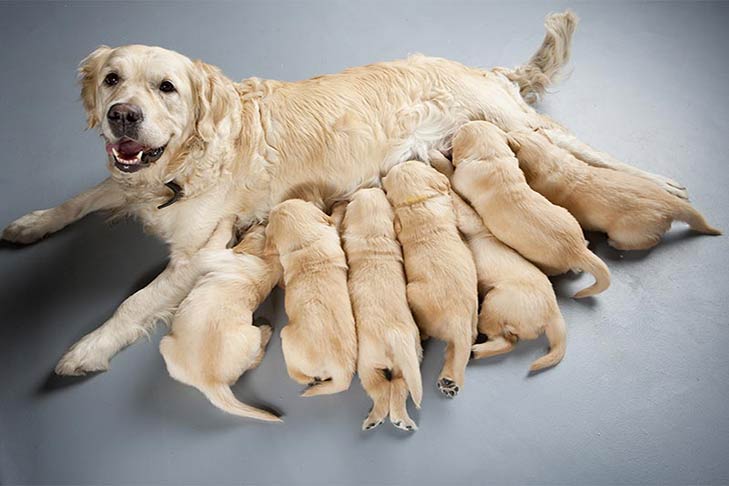
When it comes to planning a litter, most breeders agree on a few things. They want to increase conception rates, maximize litter size, and produce quality puppies — all with the safety of the bitch of the utmost importance.
These days, there are many ways for breeders to achieve their goals. While natural breeding may be preferred, it is not always an option. Although using fresh or fresh-chilled semen allows for the most convenient and less technical breedings, frozen semen can allow for the use of superior genetics from dogs that are no longer able to be collected.
Transvaginal Insemination – The most common and least technical method of artificial insemination is transvaginal insemination. In this technique, an insemination pipette is used to deposit semen into the vagina just in front of the cervix. This technique should only be used with good quality semen (fresh or fresh-chilled) and in a bitch with good fertility. Many will use this technique when breeding cannot be accomplished due to location of the bitch and/or dog, physical inability, or behavioral issues that would prevent natural breeding.
This technique is one that can be performed by the breeder with minimal training and equipment. It is important to make sure that the appropriate size insemination pipette is used. Since the semen is not pushed through the cervix (as with natural mating), the bitch’s hindquarters are elevated for 10-to-15 minutes after the semen is deposited to help encourage semen pooling and increased litter sizes.
Transcervical Insemination – Transcervical insemination (TCI) is a technique that is popular because it can be used with any form of semen (fresh, fresh-chilled, and frozen). It is one of the few options that should be used with frozen or poor-quality semen. It is a good option for large and giant breed dogs and when only one breeding can be performed. This technique can be performed either with palpation or the use of an endoscope to help see the cervix. In this technique, a special instrument is used to bypass the cervix and deposit semen directly into the uterus. Sedation is typically not needed, as most bitches will stand for the procedure. This procedure does involve the use of specialized equipment and a trained inseminator, which can add additional cost.
Surgical Insemination – The final insemination technique to discuss is surgical insemination. As with TCI, reproductive veterinarians recommend that this technicque be used with frozen or poor-quality semen. It is also a good choice for older females, females with poor fertility, and those with uterine pathology. This procedure does require the use of anesthesia. An incision is made into the abdomen, and the uterus is found. The semen is injected either into the uterine body or at the base of either horn. This procedure can be done laparoscopically, but because this requires additional equipment, training, and cost, it is generally not preferred. Conception rates can be as high as 100 percent when the estrus cycle has been appropriately managed.
Artificial insemination has become a popular means of mating, and, with the development of these different techniques, it can be performed easily and with relatively good conception rates and litter sizes. The important aspect with any of these techniques is proper cycle management. If the breeding is not performed at the correct time during a female’s estrous cycle, fertility rates can suffer.

